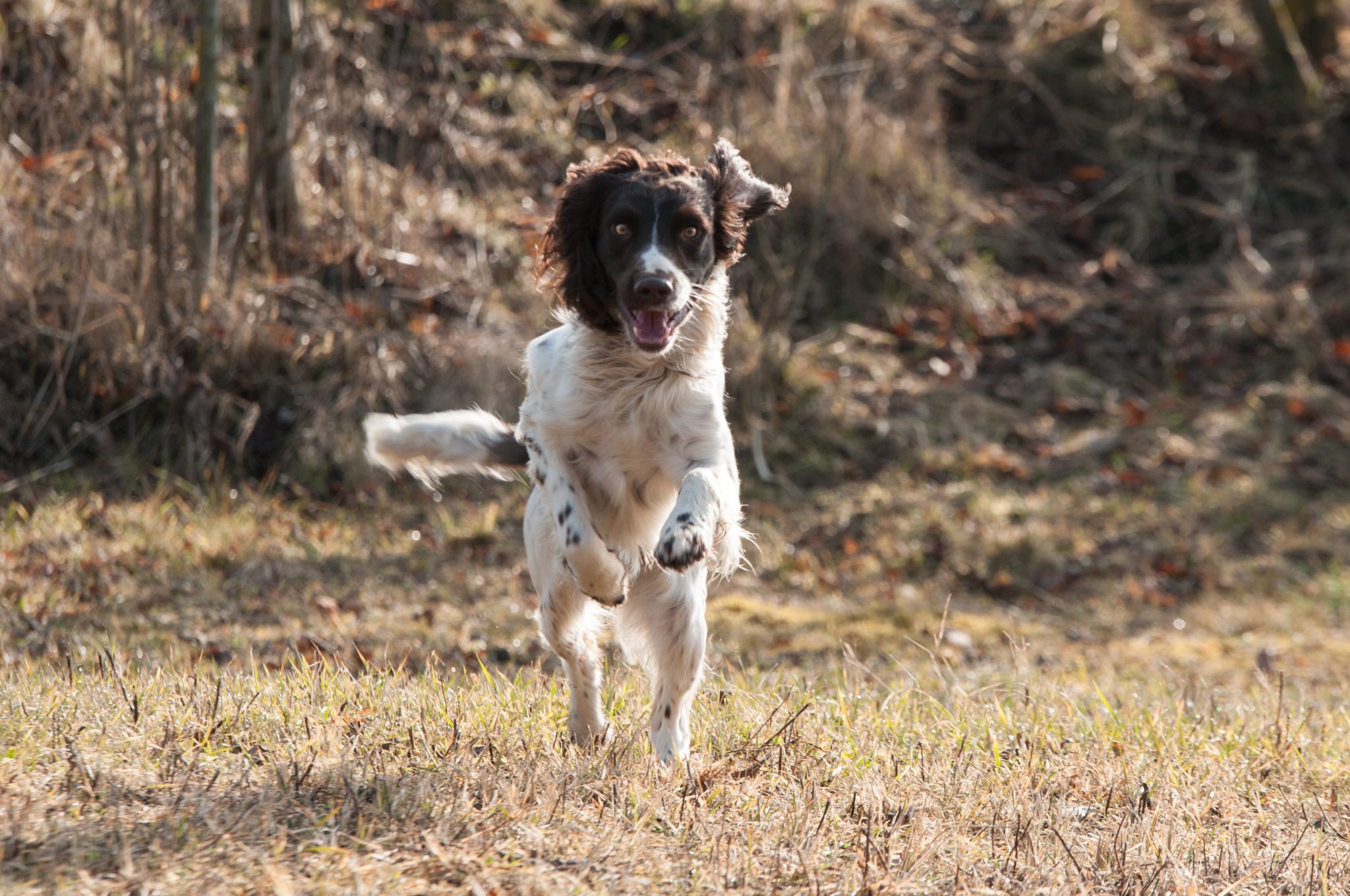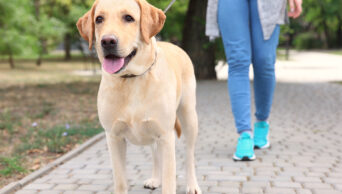“Keep on Running!” – How to help your active dog stay active, through diet and lifestyle
Dog Health , +1
November 8, 2019

Written by: Dr Jacqueline Boyd, BSc (Hons), MSc, PhD, PGCHE, CHES, FHEA, MRSB
Nutritional Consultant, Skinner’s Pet Foods
Joint health is something that many dog owners are interested in, both for themselves and for their canine companions! Indeed, joint issues are one of the most common concerns within the dog world and as our dogs get older, their joints sometimes start to show the signs of a life well lived!
For working and highly active dogs, this can be a real problem. Dogs that were once covering huge distances and performing athletic movements can start to slow down, be less keen to engage in those activities that they once enjoyed or in serious cases, start to show real signs of pain and discomfort. When this happens, veterinary support and advice is essential to ensure correct diagnosis and supportive therapies and treatments where required.
However, there are measures that you can take throughout your dog’s life to help manage their joint health and keep them active, healthy and happy for as long as possible. Thinking carefully about your dog’s environment is important and their waistline and diet can all have a positive impact on long term joint health.
Functional foods
Diet is one of the simplest ways to support joint health and that is by keeping your dog in a fit, lean condition. Carrying excess bodyweight places extra strain on the entire body and particularly on the joints. Get into the habit of (ideally!) weekly weigh-ins to monitor your dog’s weight and also body condition score regularly as weight can creep on slowly! Measure, monitor and manage your dog’s food intake also, and balance it carefully with exercise done AND additional treats if used, to ensure a consistent weight rather than weight gain!
You might also be interested in looking at specific ingredients in your dog’s diet to support joint health. Omega 3 fatty acids appear to be useful at managing inflammatory conditions such as arthritis in dogs (Roush et al., 2010) and diets rich in ingredients such as salmon (for example Field & Trial Salmon & Rice) can provide additional dietary omega three fatty acids. You might also consider the use of ingredients such as glucosamine and chondroitin that may support joint health and integrity (these are included as standard in the Field & Trial Sensitive range and Light & Senior). We also include the supplement “Joint Aid for Dogs” in our Turkey & Rice and Maintenance Plus diets, that may also help to support healthy joints.
Puppy prevention
Thinking about lifetime joint health even in young puppies is also important. As a puppy grows, their skeletal system is sensitive to impacts and injury. Until a puppy has finalised growing (which in large breeds can take up to two years!) it makes sense to be careful with exercise (amount, intensity and duration), jumping into or on and off surfaces, weight gain and even everyday obstacles such as stairs, to limit impacts on joints that could be problematic later in life. For example, agility dogs are not allowed to compete under Kennel Club regulations until at least 18 months of age, to minimise risks to their ongoing development and health.
What else?
Even in our adult dogs, there are simple things we can do to help minimise joint harm. One important point is limiting our dogs jumping into and out of cars, especially those with high boots (like 4×4 vehicles). Research has shown that jumping off platforms of heights like many car boot heights produces significant forces through the forelimbs (Pardey et al., 2018). Over a long period of time this (and indeed any repetitive landing from height) could be bad news for joints. Consider lifting your dog or providing ramps and lower platforms to reduce the impact on joints. Think carefully about exercise too – regular exercise is important for fitness and conditioning rather than infrequent but intense or prolonged activity. Watch repetitive retrieving, especially of balls and other moving targets, which again can put extra strain on the joints. Even swimming in cold water without adequate warmth afterwards can be an issue – this is the reason hydrotherapy in heated pools is generally recommended as a supportive therapy for joint issues. Other simple aspects of management such as non-slip floor surfaces and warm, comfortable bedding can be helpful for long term joint support and health, even in our otherwise fit and active adult dogs!
As ever, if you are concerned about your dog’s health, always contact your vet in the first instance, but some simple measures that you can put in place from the day your new puppy comes home, through to the standard day-to-day management of your canine companion, may just help look after their joints for their lifetime.
References and Resources
Pardey et al., (2018). Peak forelimb ground reaction forces experienced by dogs jumping from a simulated car boot. Veterinary Record 182, 716. doi: 10.1136/vr.104788
Roush et al., (2010). Evaluation of the effects of dietary supplementation with fish oil omega-3 fatty acids on weight bearing in dogs with osteoarthritis. J Am Vet Med Assoc. 236(1): 67–73. doi: 10.2460/javma.236.1.67
PFMA Dog Size-O-Meter available at – https://www.ukpetfood.org/resource/dog-weight-size-o-meter.html



